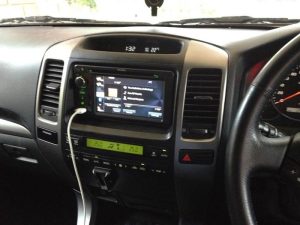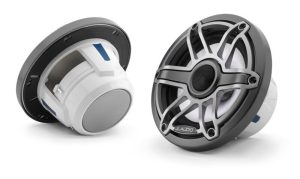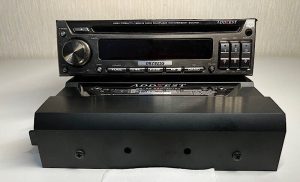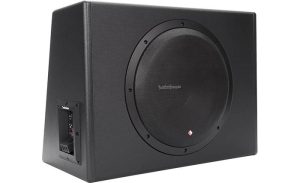Car amplifiers transform your vehicle’s audio system, delivering powerful, clear sound that elevates every drive. Whether you crave booming bass or crisp highs, choosing the right amplifier makes all the difference. This guide explores the various types of car amplifiers, their features, and how to pick the perfect one for your audio setup. Let’s dive into the world of car audio amplifiers and unlock the secrets to superior sound.
Contents
- Why Car Amplifiers Matter
- Types of Car Amplifiers by Channel Configuration
- Amplifier Classes: Efficiency and Sound Quality
- Key Features to Consider
- Choosing the Right Amplifier for Your Needs
- Top Brands for Car Amplifiers
- Installation Tips for Optimal Performance
- Common Mistakes to Avoid
- Elevate Your Car Audio Experience
Why Car Amplifiers Matter
Car amplifiers boost weak audio signals from your head unit, powering speakers and subwoofers with precision. Factory-installed stereos often lack the strength to drive aftermarket speakers or subwoofers effectively. An amplifier solves this problem, providing clean power for louder, distortion-free sound. It enhances clarity, depth, and dynamics, making your music come alive. From heart-pounding bass to delicate vocals, a quality amplifier ensures every note shines.
Amplifiers also offer flexibility. They support complex audio setups, including multiple speakers and subwoofers, allowing you to customize your soundstage. By matching an amplifier to your speakers’ power needs, you avoid damage and maximize performance. Understanding the types of amplifiers available helps you build a system tailored to your music preferences and vehicle size.
Types of Car Amplifiers by Channel Configuration
Car amplifiers come in different channel configurations, each designed for specific audio setups. The number of channels determines how many speakers or subwoofers the amplifier can power. Let’s break down the most common types.
Mono Amplifiers (1-Channel)
Mono amplifiers, or single-channel amps, deliver power to one speaker, typically a subwoofer. These amps excel at producing low-frequency bass, making them ideal for bass enthusiasts. They feature built-in low-pass filters and bass boost controls to fine-tune deep, rumbling tones. Class D mono amplifiers dominate this category due to their efficiency, producing less heat and drawing less battery power.
Mono amps suit simple setups focused on powerful bass. For example, pairing a mono amp with a high-quality subwoofer creates a bass-heavy system without overwhelming mids and highs. Their compact design fits easily in tight spaces, like under seats or in trunks. If you love hip-hop, EDM, or rock with heavy basslines, a mono amplifier is a must-have.
2-Channel Amplifiers
2-channel amplifiers power two speakers, such as front or rear door speakers, or a single subwoofer when bridged. Bridging combines the two channels into one, doubling the power output for a single component. These amps work well for full-range or component speaker systems, delivering clear mids and highs. They often include high-pass filters to block low frequencies, ensuring speakers focus on vocals and instruments.
2-channel amps fit small to medium-sized vehicles with basic audio upgrades. They’re perfect for drivers who want improved sound quality without a subwoofer. For instance, installing a 2-channel amp to power coaxial speakers enhances clarity for podcasts, pop, or classical music. Their versatility makes them a popular choice for budget-conscious audiophiles.
4-Channel Amplifiers
4-channel amplifiers drive four speakers, typically front and rear sets, or two speakers and a subwoofer when bridged. These amps offer flexibility for comprehensive audio systems. They include adjustable crossovers, allowing you to control which frequencies reach each speaker. This ensures balanced sound across your vehicle’s interior.
These amplifiers suit drivers upgrading factory systems with aftermarket speakers. They provide enough power to handle component speakers, which separate tweeters and woofers for better soundstaging. A 4-channel amp creates a dynamic listening experience, ideal for genres like rock, jazz, or country. Their compact designs make installation straightforward, even in smaller cars.
5-Channel Amplifiers
5-channel amplifiers power an entire audio system—four speakers and a subwoofer—in one unit. They combine the benefits of multi-channel and mono amps, delivering crisp highs, rich mids, and deep bass. These amps feature dedicated channels for each component, with built-in crossovers and bass controls for precise tuning.
5-channel amps save space and simplify wiring, making them perfect for drivers who want a complete audio upgrade without multiple amplifiers. They’re cost-effective compared to buying separate amps for speakers and subwoofers. Whether you enjoy hip-hop or classical, a 5-channel amp ensures every element of your music shines. Their efficiency suits medium to large vehicles, like SUVs or sedans.
6-Channel Amplifiers
6-channel amplifiers power complex audio systems with multiple speakers and subwoofers. They drive six components, such as front and rear speakers, tweeters, and a subwoofer, offering unmatched customization. These amps include advanced crossover and equalization options, letting you tailor sound to your vehicle’s acoustics.
These amplifiers fit custom setups in larger vehicles, like vans or trucks, where space allows for intricate speaker arrangements. They’re ideal for audiophiles building high-end systems with component speakers and multiple subwoofers. A 6-channel amp creates an immersive soundstage, perfect for live recordings or cinematic music.
Amplifier Classes: Efficiency and Sound Quality
Amplifiers are categorized by class, which determines their efficiency, power output, and sound quality. Each class suits different needs, from power-hungry subwoofers to high-fidelity speakers. Here’s a look at the main amplifier classes.
Class A Amplifiers
Class A amplifiers offer exceptional sound quality, keeping output transistors “on” continuously to minimize distortion. They produce warm, detailed audio, ideal for high-fidelity setups. However, they’re less efficient, generating significant heat and drawing more battery power.
These amps suit audiophiles who prioritize sound clarity over efficiency. They work best with full-range speakers in small systems, delivering pristine vocals and instrumentals. Due to their heat output, Class A amps require ample ventilation, making them less common in car audio.
Class B Amplifiers
Class B amplifiers improve efficiency by switching transistors on and off, reducing heat compared to Class A. They deliver solid power output but may introduce slight distortion at low volumes. These amps are rare in car audio, as other classes offer better performance.
Class B amps suit budget systems where efficiency matters more than perfect sound quality. They power basic speaker setups in compact cars, providing decent volume without draining the battery.
Class AB Amplifiers
Class AB amplifiers combine the best of Class A and B, balancing sound quality and efficiency. They reduce distortion at low volumes while conserving power, making them versatile for various setups. These amps power full-range speakers or subwoofers, delivering clear, dynamic sound.
Class AB amps are popular for 2- and 4-channel configurations, suiting most car audio upgrades. They handle genres like pop, rock, or podcasts with ease, offering a cost-effective solution for clear audio. Their moderate heat output makes them easy to install in most vehicles.
Class D Amplifiers
Class D amplifiers dominate modern car audio due to their high efficiency and compact size. They use rapid switching to amplify signals, producing minimal heat and drawing less battery power. Despite their efficiency, advanced Class D amps deliver excellent sound quality, rivaling Class AB.
These amps power subwoofers, speakers, or entire systems, making them ideal for mono, 4-channel, or 5-channel setups. They fit small vehicles or complex systems, handling bass-heavy genres like EDM or hip-hop effortlessly. Their efficiency ensures long-term reliability, even in demanding conditions.
Key Features to Consider
Choosing the right amplifier involves evaluating key features that impact performance and compatibility. Here are the essentials to keep in mind.
Power Output (RMS and Peak)
Power output determines how much energy an amplifier sends to your speakers. Root Mean Square (RMS) power measures continuous output, ensuring consistent performance. Peak power indicates the maximum output for short bursts, like sudden drum hits. Match the amplifier’s RMS power to your speakers’ power handling to prevent damage and optimize sound.
For example, if your speakers handle 50 watts RMS, choose an amplifier delivering 40-75 watts RMS per channel. This range provides headroom for dynamic music without overpowering components. Check your subwoofer’s power requirements, as they often need higher RMS ratings.
Crossover Controls
Crossovers direct specific frequencies to the right speakers, ensuring tweeters handle highs, woofers manage mids, and subwoofers tackle lows. High-pass filters block low frequencies, while low-pass filters restrict highs. Adjustable crossovers let you fine-tune sound for a balanced audio experience.
Look for amplifiers with built-in active crossovers, which split signals before amplification for better efficiency. This feature is crucial for multi-channel amps powering diverse speaker setups.
Bass Boost and Equalization
Bass boost enhances low frequencies, adding punch to your subwoofer’s output. Many mono and 5-channel amps include this feature, letting you dial in the perfect bass level. Equalization (EQ) controls adjust specific frequency bands, tailoring sound to your vehicle’s acoustics or music preferences.
These features suit bass-heavy genres or vehicles with poor acoustics, like convertibles. Use them sparingly to avoid distortion or speaker damage.
Signal-to-Noise Ratio (SNR)
The signal-to-noise ratio measures how much clean signal an amplifier produces compared to background noise. A higher SNR (e.g., 90 dB or above) ensures clearer sound, especially at low volumes. Check SNR ratings to choose an amplifier that minimizes hiss or hum, delivering pure audio.
Impedance Matching
Impedance, measured in ohms, affects how much power an amplifier delivers. Most car speakers and subwoofers are 2 or 4 ohms. Ensure your amplifier supports your components’ impedance for optimal performance. Some amps handle multiple impedance levels, offering flexibility for complex setups.
Choosing the Right Amplifier for Your Needs
Selecting an amplifier depends on your audio goals, vehicle size, and budget. Start by assessing your current system. Do you have aftermarket speakers or a subwoofer? How many components do you want to power? Answering these questions narrows your options.
For simple upgrades, a 2- or 4-channel Class AB amplifier powers door speakers, enhancing clarity for mids and highs. If bass is your priority, a Class D mono amplifier paired with a subwoofer delivers deep, powerful lows. For a complete system, a 5-channel Class D amplifier offers all-in-one convenience, driving speakers and a subwoofer efficiently.
Consider your vehicle’s space constraints. Compact Class D amps fit small cars, while larger 6-channel amps suit SUVs or trucks. Match the amplifier’s power output to your speakers’ RMS ratings to avoid damage. Budget plays a role, too—Class D amps often provide the best value, balancing performance and cost.
Installation matters as much as selection. Improper wiring or grounding causes noise, like alternator whine. Use high-quality cables and follow manufacturer guidelines. If you’re unsure, hire a professional installer to ensure optimal performance and safety.
Top Brands for Car Amplifiers
Trusted brands deliver reliable, high-quality amplifiers. Here are some industry leaders:
- Alpine: Known for compact, efficient Class D amplifiers with excellent sound quality.
- Kenwood: Offers versatile multi-channel amps with advanced crossover options.
- Pioneer: Provides budget-friendly Class AB and D amps for various setups.
- JL Audio: Specializes in high-end mono and multi-channel amps for audiophiles.
- Rockford Fosgate: Delivers powerful, durable amplifiers for bass-heavy systems.
Research models from these brands to find amplifiers that match your needs and budget. Check user reviews and expert guides for real-world performance insights.
Installation Tips for Optimal Performance
Proper installation maximizes your amplifier’s potential. Follow these tips for a seamless setup:
- Choose the Right Location: Mount the amplifier in a well-ventilated area, like the trunk or under a seat, to prevent overheating.
- Use Quality Wiring: High-gauge power and ground cables reduce resistance, ensuring stable performance.
- Secure Grounding: Connect the ground wire to a clean, unpainted metal surface to avoid noise issues.
- Adjust Gain Settings: Set the gain to match your head unit’s output, preventing clipping and distortion.
- Test the System: Play a variety of tracks to check for balanced sound and tweak crossover or EQ settings as needed.
Professional installation guarantees safety and performance, especially for complex systems. If you’re a DIY enthusiast, consult detailed guides or forums like CarAudio.com for expert advice.
Common Mistakes to Avoid
Steer clear of these pitfalls when choosing and installing an amplifier:
- Mismatching Power: Pairing an underpowered or overpowered amp with speakers risks damage or poor sound quality.
- Ignoring Impedance: Using components with incompatible ohms reduces efficiency and output.
- Skipping Crossovers: Without proper frequency management, speakers may distort or underperform.
- Poor Wiring: Low-quality cables or loose connections cause noise and power loss.
- Overboosting Bass: Excessive bass boost leads to distortion and shortens speaker lifespan.
Take time to research and plan your setup to avoid these issues. A well-designed system delivers years of high-quality audio.
Elevate Your Car Audio Experience
Car amplifiers unlock the full potential of your audio system, delivering powerful, clear sound tailored to your preferences. Whether you choose a mono amp for booming bass or a 5-channel amp for a complete setup, understanding the types and features ensures you make the right choice. Match your amplifier to your speakers, vehicle, and music tastes for an immersive listening experience.
Ready to upgrade? Explore top brands like Alpine, Kenwood, or JL Audio, and prioritize proper installation for peak performance. With the right amplifier, every drive becomes a concert on wheels. Share your favorite car audio tips or questions in the comments, and let’s keep the music rolling!






